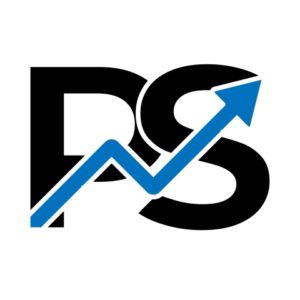Out of the many industries in the tech world, SaaS acquires an important place given its sudden popularity and success which has changed the way businesses think about their products. With many entrepreneurs being bold and brave to enter new markets, the question regarding the future of SaaS is often asked.
SaaS is predicted to grow exponentially in the coming years with expert firms predicting the industry will be worth $208 billion by the end of 2023. Firms also predict that there will be a rise in profits with the involvement of artificial and machine learning and a switch towards low coding will be prominent.
This high rolling market is a magnet for new businesses and entrepreneurs. To navigate this swiftly, you must know about how the market will change in the future along with the new trends that will arise. Knowing this will ease your doubts about the industry and you will have a defining edge when making future decisions.
How Is SaaS the Future?
SaaS enjoys a rapidly growing market with very high estimated growth rates. Take a look at the below pointers that summarize the key components of how SaaS sets the future of cloud computing;
- SaaS as an industry was worth $152 billion at the end of 2021.
- By the end of 2022, the industry is estimated to be worth £172 billion.
- At the end of 2024, the integration costs associated with iPaaS subscriptions and hidden fees will increase by 20%.
- At the end of 2025, a majority of the top 20 software vendors will phase out the sale of new perpetual licenses which will increase costs by at least 35%.
- At the end of 2025, 40% higher subscription costs will be seen by customers buying into industry vertical offerings. However, 30% less time will be spent on customizations.
- IT procurement will have a fundamental change by the end of 2025 with customers negotiating commercial terms for less than one-third of the software and SaaS contracts.
- Although the USA currently retains the highest stakes in the market, the growth rate is decelerating which will shift the focus to the Asia Pacific region in the long run.
- Western countries will still remain the safest choice due to IT infrastructure in Asia Pacific regions being less developed.
- Gartner had identified the top 5 key SaaS industries as;
- Banking and investment
- Communications and media
- Education
- Government
- Healthcare

Top 5 Trend Predictions for SaaS in The Future
When an industry grows rapidly, it would also mean that no day is the same as before. There are many trends which will rise in the near future that you must know.
1. Artificial Intelligence and Machine Learning Will Be the Key Players
Artificial intelligence is becoming a deeply rooted industry in the IT sector with an estimated market value of $733.7 billion by 2027. AI has revolutionized the present SaaS landscape by providing advanced responsiveness and interaction between the technology and its customers.
AI in the future will help in personalization with Natural Language Processing (NLP) technologies which will automatically transform human speech into text. Adding this feature to the customer service section will generate more sales with ease in both time and money.
AI will also help to speed up internet processors, increase the levels of security by recognizing voice patterns and facial recognition, and will be able to predict the needs of the customers through advanced data integration.
Machine learning on the other hand will be used to automate responses and comb through vast amounts of data to recognize market trends. Businesses will also be able to train the machines to perform tasks, resulting in more efficiency and intelligence.
At present, these technologies are used in streaming platforms to analyze viewing habits and suggest recommendations.
2. Greater Efforts to Retain Customers
With SaaS expanding and many new business ventures opening, the existing platforms will do everything they can to retain their customer base. This will be done through enhancing customization options for the customers when using their products and the introduction of a more freemium type of products by existing brands.
Streaming platforms will also try to make options available for a cost-friendly platform that is supported by ads. From a technological perspective, there will be personalized onboarding tutorials & videos, better mobile optimization, and advanced platform feature notifications.
This will, in turn, allow newcomers to have more industry resources to learn from reputable sources, increasing their knowledge about the industry.
3. Switching To Low Code
SaaS products will eventually make the switch to low code with the emergence of white label companies and low code software applications to the market.
A white label company will build the full profile of the company along with its specific features through codes and will sell it to the highest bidder. This will decrease the reliability of the current market to know coding to start a company.
Alternatively, many softwares are visible in the SaaS market space which will make all necessary features without the use of code. Using this software, a customer would be able to create interactive, multi-user apps for desktop and mobile web browsers, including the features needed to build complex applications.
Using the features offered, you will have the ability to send emails, set up databases, connect to APIs, and process credit card payments. You also can build in house applications like a video sharing network or a mini marketspace which depends on your MVP.
4. Migration to PaaS
Experts also predict that SaaS will slowly migrate towards the realms of PaaS (Platform as a Service). The main difference between the two entities is that PaaS requires a specific platform for the creation of software. A user who uses a PaaS service would have to purchase the platform on a monthly or yearly basis and use it to create a specific software. The advantage of this system is the vast number of features and analytics a user can get from one single place.
The advantage of PaaS lies in the less coding time due to the purchased platform already being coded. PaaS is also known for its agility and scalability where the platforms allow a multitude of customizations that support many services of different types.
One popular example of SaaS switching into PaaS is when the food delivery app Deliveroo expanded its global reach using Amazon’s AWS tools and inbuilt features.
5. The Growth of Vertical Sales
SaaS is expected to grow in its vertical sales rates with the introduction of new features such as advanced machine learning and artificial intelligence. Vertical SaaS will be concentrated on clients within specific industries that have the potential to use products rather than advertising the products in many places which takes money.
This will result in flexibility, upselling opportunities, and lower customer acquisition costs. The growth of vertical SaaS will give birth to many niche business types which will spend their efforts to target specific customers by creating services.
These services will have a higher quality of service and will develop further to host innovative niche solutions for businesses.
Why Should I Invest in SaaS?
With SaaS being an incredibly popular market with sky-high potential, you may be thinking of making an investment or planning to make a career move in this sector. If not, you definitely should! Here’s why;
SaaS Developers Gets a Higher Income
The average salary for a professional in the tech market was estimated by the U.S. Bureau of Labor Statistics to be $103,900. This is also three times the salary a professional working in a normal field would receive.
If you’re living in the Asia Pacific region, you will also do well given the industry’s predicted shift towards this region. Developers in these countries are getting an hourly wage of $15 to $50 with predictions saying this too will increase.
SaaS Is Scalable
Size doesn’t matter in SaaS! Whether you are an entrepreneur who is just starting to think about a small-scale SaaS product idea or employed at a high-end business aiming to produce its umpteenth project, SaaS has got you covered.
Companies and entrepreneurs can choose what they want in terms of applications, MVPs, and mobile interfaces by customizing many aspects. They also can get help from a range of developers who sell their programming skills at many industry levels.
The low code software sites and web applications also make this market open to all with little to no experience needed.
Increased Networking and Collaborations
The vast plethora of SaaS services and the high number of people involved in it make the industry networkable. There are many players in the industry offering tips, tricks, and advice ranging from SaaS experts to self-made entrepreneurs who can offer guidance and predictions to newcomers.
This high number of networks can cause industry collaborations with different players that can result in huge profits. Additionally, the growth of social media and Elon Musk purchasing twitter are all healthy predictions of the marketable scale of SaaS.
SaaS is Very Secure
Unlike most IT-related business ventures, SaaS enjoys a high level of state-of-the-art security given the cloud-based model. Preexisting disaster recovery protocols are always embedded in the cloud which means the data of you and your business will be available regardless of any data breach.
Reliability and Accessibility
The cloud computing model of SaaS has proven to be a very reliable model with minimum downtime. The softwares and services used are auto-updated every time unlike traditional software while most sites enjoy an uptime of over 99%.
Being constantly connected to the internet makes SaaS accessible from any part of the world. This accessibility coupled with SaaS being very user and mobile-friendly makes this industry less reliant on traditional workspace practices like investing in a place to work.
However, the Achilles heel of SaaS also comes from its reliability on a high-speed internet connection.
Opportunities and Threats
| Opportunities | Threats |
| Flexible payment: customers can customize and pay for specific services | Accelerated growth Accelerated digital transformation can leave many gaps in security and market integration |
| Data governance procedures are estimated to rise, increasing data security | Higher demand for cybersecurity The demand for cybersecurity professionals is not being met during the rapid expansion |
| Creation of new services The creation of niche services targeted toward the remote working sector with the expansion of vertical SaaS | Unsafe hardware practices The devices and unsafe internet connections used by staff working remotely can be an added threat in the long run |
| Low code platforms The emergence of low code platforms will bring in more skilled entrepreneurs who are not familiar with coding | 24/7 monitoring The need for 24/7 monitoring of the cloud will prove to be a risk if AI and machine learning don’t get involved |
| Emergence of more organizations The emergence of more cross-platform organizations to bridge the management and transparency gaps existing in the market | Transparency The lack of transparency of some business models could lead to a rise in ownership issues |
Frequently Asked Questions
- How Much Will SaaS Grow by The End of This Decade?
The global SaaS market is currently valued at $172 billion. Experts predict that the global market will reach a whopping $702 billion by the end of 2030, growing at a rate of 18.82%
- What Are the Biggest SaaS Companies Currently in The Market?
Salesforce has the highest market cap out of all SaaS companies with $208 billion. The next big players are Microsoft and Adobe who are not far behind. The dynamic CRM and SQL server databases offered by Microsoft may tip them as the biggest SaaS operator in the near future.
- What are the highest growing SaaS startups?
New SaaS launches such as LinkTree, ProtonVPN, Printify, HotJar, and TripActions are some of the fastest-growing startups in the current market. ProtoVPN and LinkTree have taken the world in a storm with both startups showing an 8200% growth rate for 5 years. LinkTree has also crossed a $1.3 billion valuation in March 2022.
Learn More about SaaS
-
How Do I Come Up with a SaaS Idea?

The way we buy and sell products has changed since the dawn of time, and the present world witnesses an unrivaled boom in software-based services in the tech world. This
-
Create SaaS Without Coding

Software as a Service, or SaaS for short is one of the highest growing markets in the IT sector. So, you may be thinking of getting your hands on a
-
How Much Does It Cost to Start a SaaS Company?

The market space of Software as a Service, or SaaS, continues to grow and is often hailed as the next big thing that will change digital life as we know
Conclusion
SaaS is a market of huge potential which is estimated to be worth over $700 billion within another 8 years. There are many trends in the market which are expected to disrupt the current market space with the emergence of consumer-supported customizations and niche markets. Although there are some threats, major investments by big firms are guaranteed to make this market more profitable than ever.
